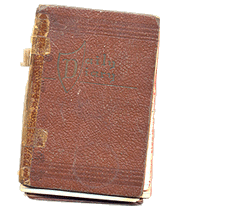Friday, November 2, 1945:
TODAY MARKS 25 YEARS OF RADIO BROADCASTING - Election Return Program Considered First: Twenty-five years ago today station KDKA, Pittsburgh, broadcast the Harding-Cox election returns and ushered in the era of radio broadcasting.
On this Election Day of Tuesday, November 2, 2010, we can get the latest election returns and all the analysis we care to read-text or video- from a wireless phone we carry in our pockets. But 90 years ago today you had to wait for the next day's newspaper. Unless you were one of the tiny handful of hobbyists who owned one of the newfangled "Amateur Wireless Sets":
As the months of 1920 passed by, amateur interest increased, and a number of people in the Pittsburgh area were wondering how they might be able to obtain sets of their own. In early September, the Joseph Home Department Store in Pittsburgh put an ad in the Pittsburgh Sun notifying the public that the store had on display a radio set for amateur use that could pick up the Conrad radio programs. Not only was the Horne Company going to display and demonstrate this equipment, they were going to sell it as well: "Amateur Wireless Sets, made by the maker of the set which is in operation in our store, are on sale here, $10.00 up."
Amateur wireless sets on sale! On sale to the general public, not just to the radio ham or buff! The day the ad appeared, Harry P. Davis, vice president at Westinghouse, saw the ad in the newspaper, and it aroused his interest. He was Conrad's superior at Westinghouse, and of course he knew all about Conrad's amateur broadcasts. But the sale of radio sets to the public--here was an idea that nobody had thought of before. Even if Westinghouse had been shoved out of the central core of the radio business as it now stood, perhaps something new could be drummed up. Sets not merely for radio "professionals" but for the general public--all made by Westinghouse, of course.
The day following the Home advertisement, Davis held a conference with Conrad and other Westinghouse officials raising the possibility of building a bigger and more powerful transmitter at the Westinghouse plant, with the plan of offering radio broadcasting on a regular basis. In subsequent conferences Davis wondered if it would be possible to have a station and a suitable transmitter ready for regular operation in time for the Harding-Cox presidential election on November 2. Yes, it was definitely possible, said Conrad, and accordingly he and Donald Little were assigned to the task.
The immediate objective was to get ready for the election, now only two months away, but the long-term objective was a regular broadcasting service that could be depended on by listeners day after day and week after week. The technical problems would not be hard to overcome with Conrad at the helm; the public relations aspect of the thing was a bit more involved. But everything moved apace. On the roof of one of the buildings at Westinghouse's East Pittsburgh plant a shack and 100-watt transmitter were built. To give additional range, an antenna ran from the roof of the shack to one of the powerhouse smokestacks. On October 16, the Westinghouse Company applied to the United States Department of Commerce for a license to begin a regular broadcasting service. By telephone a few days later Westinghouse received permission to use the amateur call letters 8ZZ in case the formal and written license was not received by November 2. However, on October 27, formal notification arrived, and the station received the call letters KDKA (these were the same as those used in commercial shore stations). The station was authorized to use 360 meters, giving them a clear channel away from amateur use.
Westinghouse was also beginning production of sets for home use, and these, together with the imminent inauguration of programming, were given ample notice in the local press. As things turned out, the flood of new sets did not begin until well after the election, but Westinghouse was laying plans for selling them. They were also making preparations for the programming that was to go out over the air since if one is going to have regular broadcasting one has to have something to broadcast. Arrangements were made to have the Pittsburgh Post telephone the election results to Westinghouse as soon as they became available from the news wire services. Filling up the gaps would be a banjo player and some of those reliable old phonograph records that had been a major part of Conrad's private broadcasts.
The big night came and went without a hitch. To be on the safe side Frank Conrad was standing by at his own transmitter at Wilkinsburg, prepared to send out the returns from there if necessary. But it wasn't necessary. The broadcast on election night began at 8 P. M. Eastern Standard Time and ran until after midnight. Donald Little and John Frazier were in charge of the technical side of the operation, and Leo Rosenberg of Westinghouse's publicity department read the bulletins as they came in.
About the elections there had been little doubt from the beginning-- Harding and Coolidge were easy winners over Cox and Roosevelt. There might have been some doubts in the Westinghouse boardroom about the fate of KDKA, but there needn't have been. The evening was a smashing success, and the next day scores of telephone calls from listeners came through the Westinghouse switchboard. There were many more listeners than there were sets, listeners mainly gathering in large numbers at central locations--churches, lodges, the private homes of Westinghouse executives--to be guinea pigs for the experiment. Everyone was delighted.
Historically, the important thing was that KDKA did not simply turn off its power and fold up after the election night special, but, as promised, continued its nightly broadcasts on a regular basis.


No comments:
Post a Comment